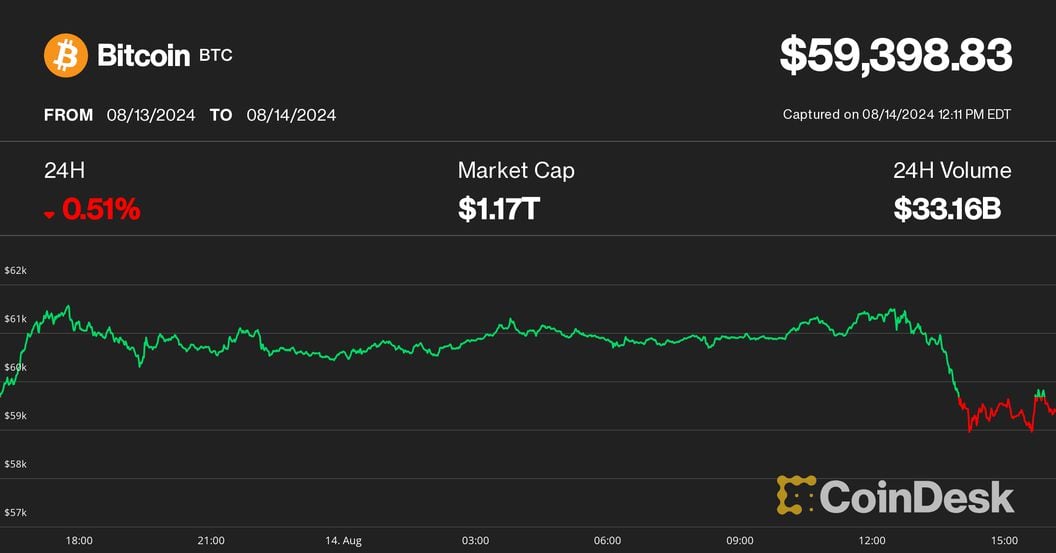Early this week, bond markets will face a major test that might send yields sharply higher and challenge investors' optimism about stocks amid the current bull market.
Treasury yields have increased notably over the past month, taking benchmark 10-year notes to the highest levels since May. The market move reflects a combination of renewed inflation risks, hawkish messaging from the Federal Reserve, and concern that President-elect Donald Trump's new administration will pile more debt onto the nation's staggering $36 trillion tally.
🎁 Buy 1 Year and Get 1 Year FREE on TheStreet Pro. Act now before it's gone ⏰
Morgan Stanley analyst Mike Wilson, in fact, says rate markets will be "the most important variable to watch" in the first few months of the year as stocks look to shake off their late-December lull and meet bullish forecasts from Wall Street analysts.
“In early December, we highlighted that 4%-4.5% on the 10-year yield was likely the sweet spot for equity multiples,” Wilson and his team wrote. But they now see the correlation between the S&P 500 and Treasury bond yields as "decisively negative."

That could prove to be a key driver for stock direction this week as, in coming days, the Treasury preps a trio of benchmark bond auctions valued at around $119 billion, including a key sale of $39 billion in 10-year notes.
Treasury investors eye jobs market data
Markets will also navigate a quartet of labor-market data releases over the shortened trading week, which will see the stock market closed on Thursday, a day of mourning to mark the passing of former President Jimmy Carter.
The key reading arrives Friday in the form of the Labor Department's December employment report, which is expected to show the economy closed out the year with 150,000 new hires and a headline jobless rate of 4.2%.
Related: Stocks face correction risk as Santa Claus Rally fails to deliver
Bond markets will pay close attention to the report, particularly with respect to wage gains, as inflation pressures linger in an economy that continues to defy predictions of a slowdown.
Inflation is often referred to as the enemy of bonds because it erodes the present value of future coupon and principal payments, making them especially sensitive to changes in forecasts.
As traders dump bonds in the face of quickening inflation, the yields rise, creating an attractive risk-free option for investors while indicating potential headwinds for corporate earnings and the broader economy.
Benchmark 10-year Treasury note yields, the global financial market's baseline for risk-free rates, touched the highest levels in eight months last week and rose more than 50 basis points (0.5 percentage point) in December.
The paper was last marked at 4.632%, a level that, if it continues higher, could indicate near-term pressure on stocks.
Stocks negatively correlated to Treasury yields
Wilson at Morgan Stanley also notes that the rise in yields comes when stock market breadth, or the number of stocks that are gaining ground, is narrowing.
In November, he and his team pegged the S&P 500 at around 6,500 points by year's end, an 8% advance from current levels. Their bull case sees benchmark 10-year Treasury note yields falling to 2.2% and lifting the index as high as 7,400 points.
For the market to separate from the risk of higher yields, more stocks need to improve their recent performance, and the S&P 500 needs to rely less on megacap tech names.
That, in turn, "likely relies on a combination of lower rates, a weaker dollar, clarity on tariff policy/cabinet confirmations and stronger earnings revisions,” Wilson says.
At present, LSEG data suggest collective S&P 500 earnings will rise to $275 a share this year, a 14.2% advance from 2024, with tech and financial stocks leading the near-term gains.
Related: Gangbuster S&P 500 returns depend on one crucial thing in 2025
Treasury yields could also jump if the U.S. breaches its current debt ceiling, pegged at $31.4 trillion but suspended in 2023, later this month.
"I respectfully urge Congress to act to protect the full faith and credit of the United States," Treasury Secretary Janet Yellen wrote in a letter last week.
U.S. debt is the 'elephant in the room'
So far, there's little sign of that: Trump has urged lawmakers to eliminate the debt ceiling entirely, while House Republicans are focused on a "one bill" strategy of tax cuts, tariffs and immigration reform. The Committee for a Responsible Federal Budget estimates that bill could add another $7.5 trillion to the national debt.
Louis Navellier of Navellier Calculated Investing says that the rising U.S. debt levels are the "elephant in the room that may keep interest rates from coming down to 'normal' levels above inflation."
More Economic Analysis:
"A guaranteed event percolating is the huge amount of government debt that is rolling over in the next 2 years, $7.6 trillion in '25, most into higher coupon rates," he argued.
"With federal interest expense already over a trillion dollars annually, this may be the biggest challenge and has no easy solutions," he added.
Related: Veteran fund manager issues dire S&P 500 warning for 2025






